Ambient light control for patient-centered hospital rooms
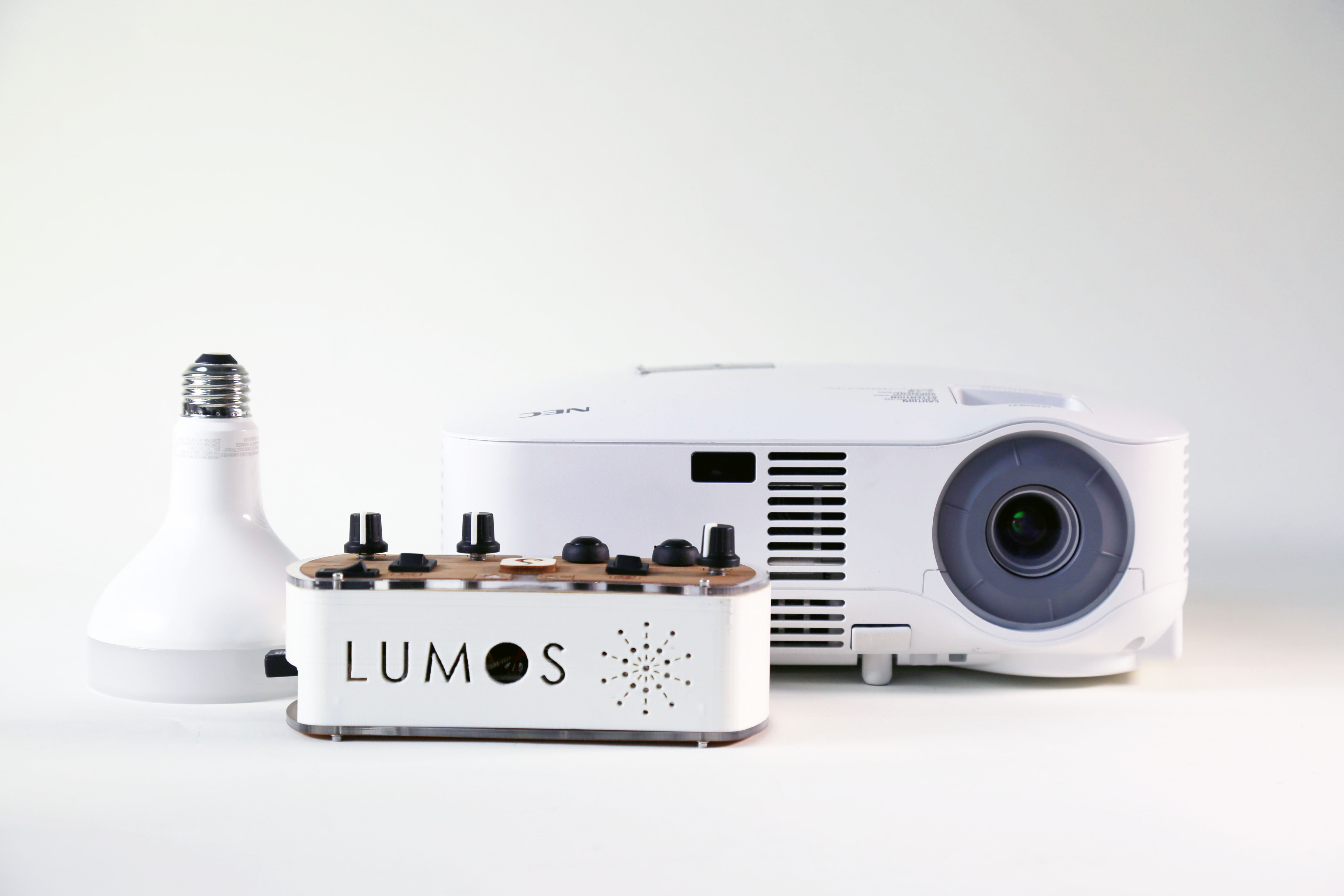
Michelle Chang, Serena Chang, Carrina Dong, Jimmy Huang
View on GitHub | 2017 Infy Maker Awards Winner
Contributions: Visual design; user research; electrical and software prototyping; photography and videography
Lumos is a device which allows hospital in-patients to control their ambient environment and interact with loved ones. Its purpose is to combat hospital-induced delirium as well as irritation and loneliness, which may stem from the clinical environment. Lumos is a phyiscal controller with three key features:
The controller interfaces with two external components: a LIFX smart bulb with WiFi capabilities and a projector.
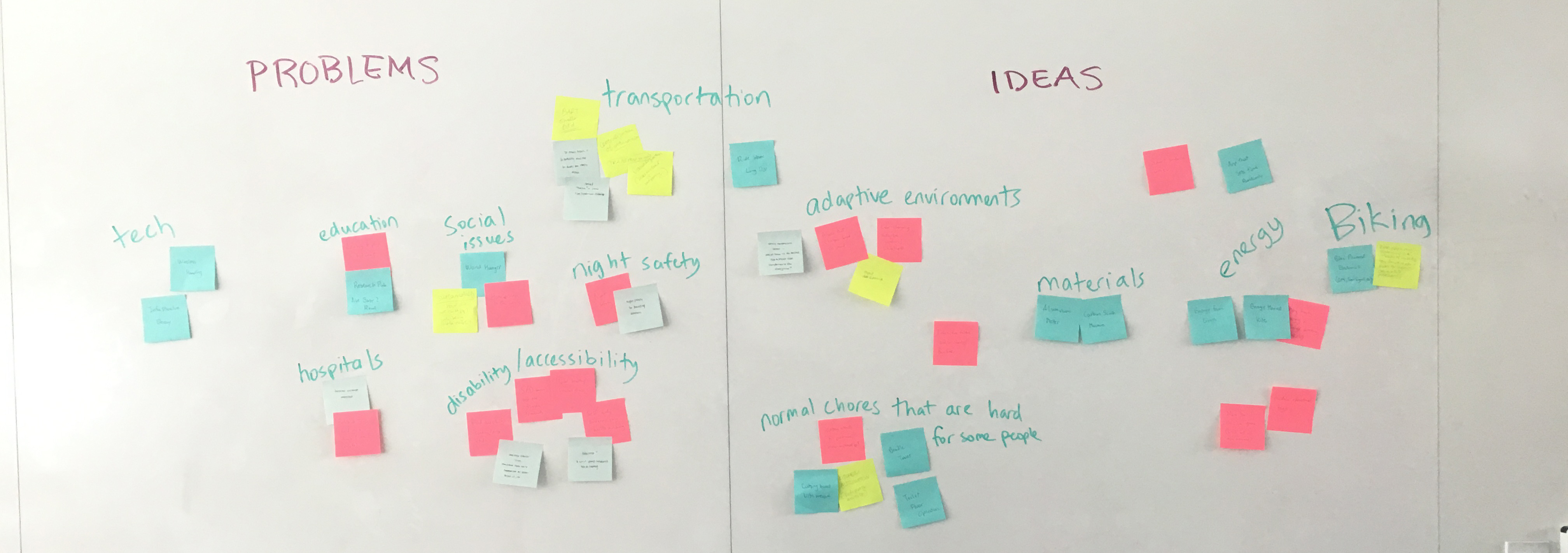
We began with the knowledge that we wanted to create a device to better the lives of others. Using a series of ideation exercises (including post-its and clustering), we compiled a list of 26 possible ideas and used this to gauge our interest as a group.
We found the concept of designing for the "hospital room of the future" universally relatable (after all, everyone will inevitably go to the hospital at some point in their lives). The idea that the majority of modern hospital rooms are designed for the physician and not patient-centered was both dismaying and something our members have experienced first-hand. After hearing a representative from UCSF explain how widespread the issue of delirium (also known as ICU psychosis or hospital dementia) is in hospital in-patients, we decided to make this our core focus. After learning that delirium is tied to patients losing track of the outside world and the passage of time, we decided to tackle the issue by creating a lighting system that would improve the overall experience of long-term patients, by helping them stay in tune with their Circadian rhythm.
Following this, we created a deck detailing our general interest area, target user group, and important questions we would consider in further distilling our product idea.
In essence, we decided that our lighting system would target long-term patients in hospitals and other medical care facilities. The reasoning goes that such facilities house patients for a week or more (such as rehabilitation and hospice centers), and also shelter the nursing staff that interact with the patients during their stay. Because long-term patients are most susceptible to lack of stimulation or depression from the clinical atmosphere of medical facilities, and stay under medical supervision for extended periods of time, they are the most in need of proper lighting for resting, reading, and living.
NOTE: In retrospect, we realized that hospital room designers may also be part of our target user base. These individuals not only improve the patient experience, but can also make ambient technology customizable and cost effective for hospitals. This is an area for future user research, as it may be worthwhile to speak with hospital design directors and other such professionals to uncover what currently prevents hospitals from adapting existing ambient lighting technology.
In order to better understand the space we were designing for, we reached out to people with experience staying in a medical care facility for more than a week or interacting with patients in long-term care. (Specific examples are omitted here to preserve privacy.) Our procedure was as follows:
From these interviews, we learned that:
We also conducted an in-person inquiry with Dr. Rogers of UCSF Parnassus. While the ideal contextual inquiry would have been to shadow him treating and caring for a patient (or even watching a day in the life of a long-term-care patient, for that matter), there were, as one might expect, significant privacy concerns involved. Instead, he and his staff showed us around a standard hospital room, walked us through the actions they typically performed, and answered our follow up questions. During our visit, we were fortunate enough to bump into a patient who was willing to answer questions about room lighting and her daily life.
Here are photos we took of the room's control systems:
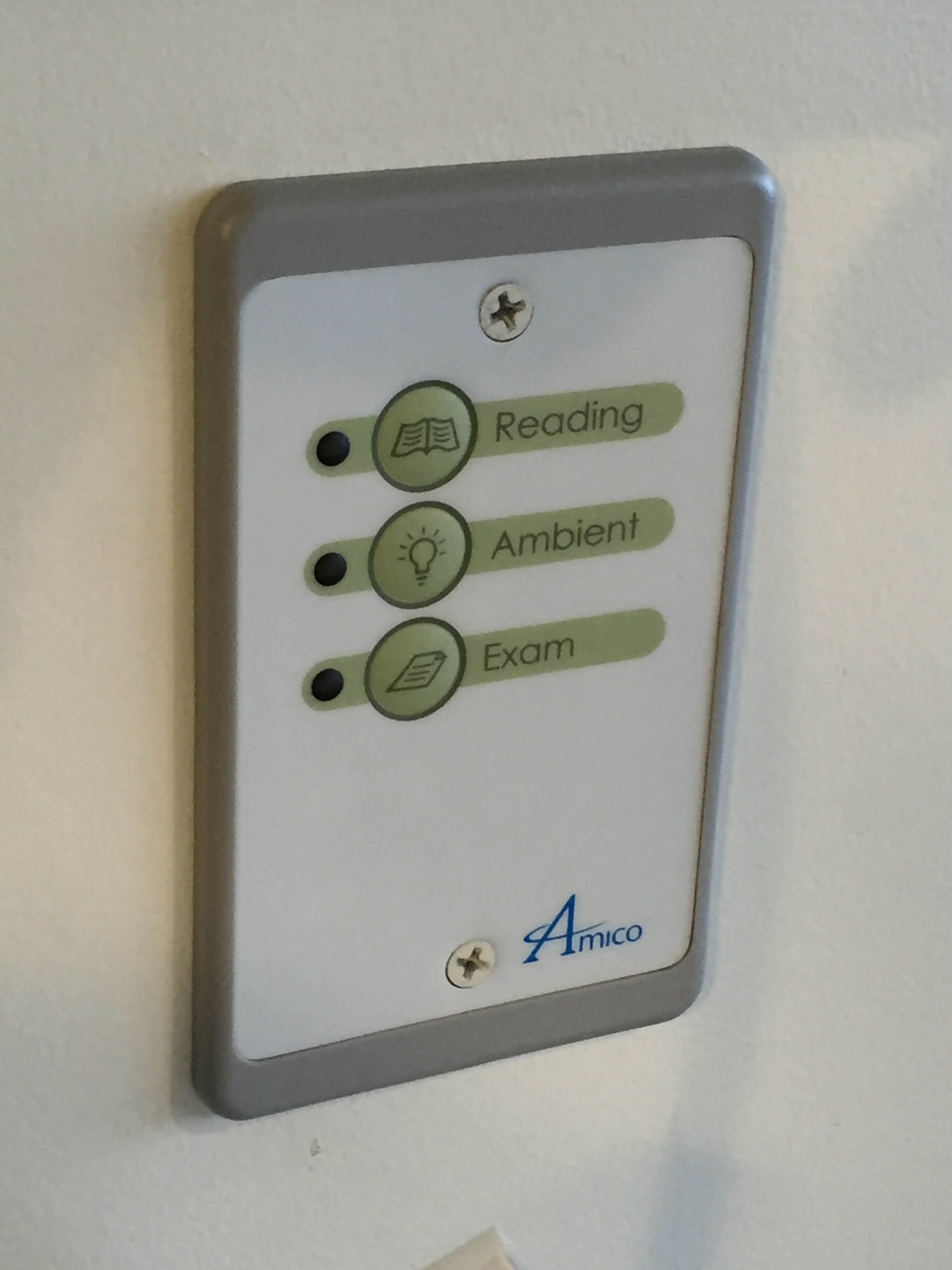
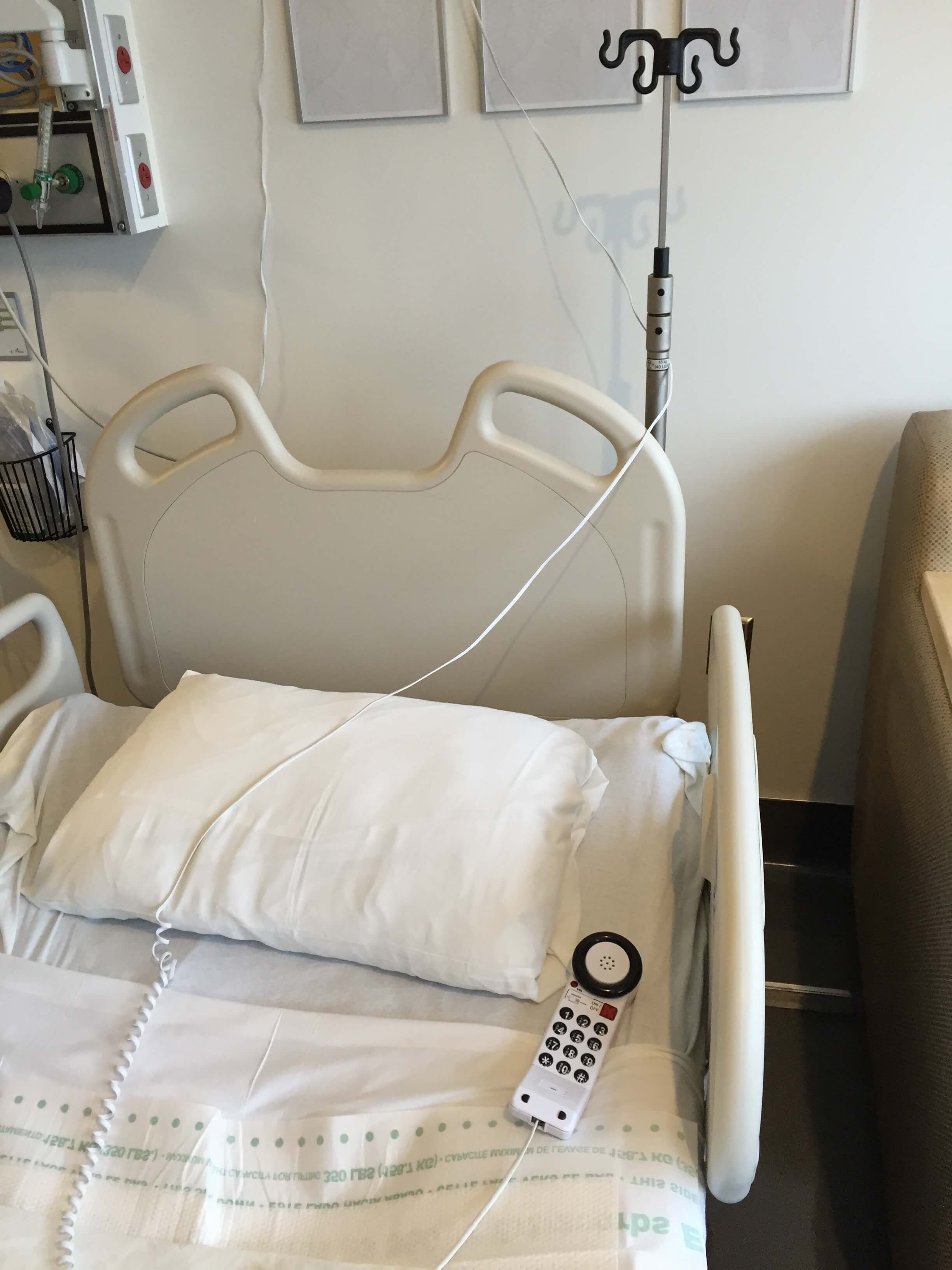
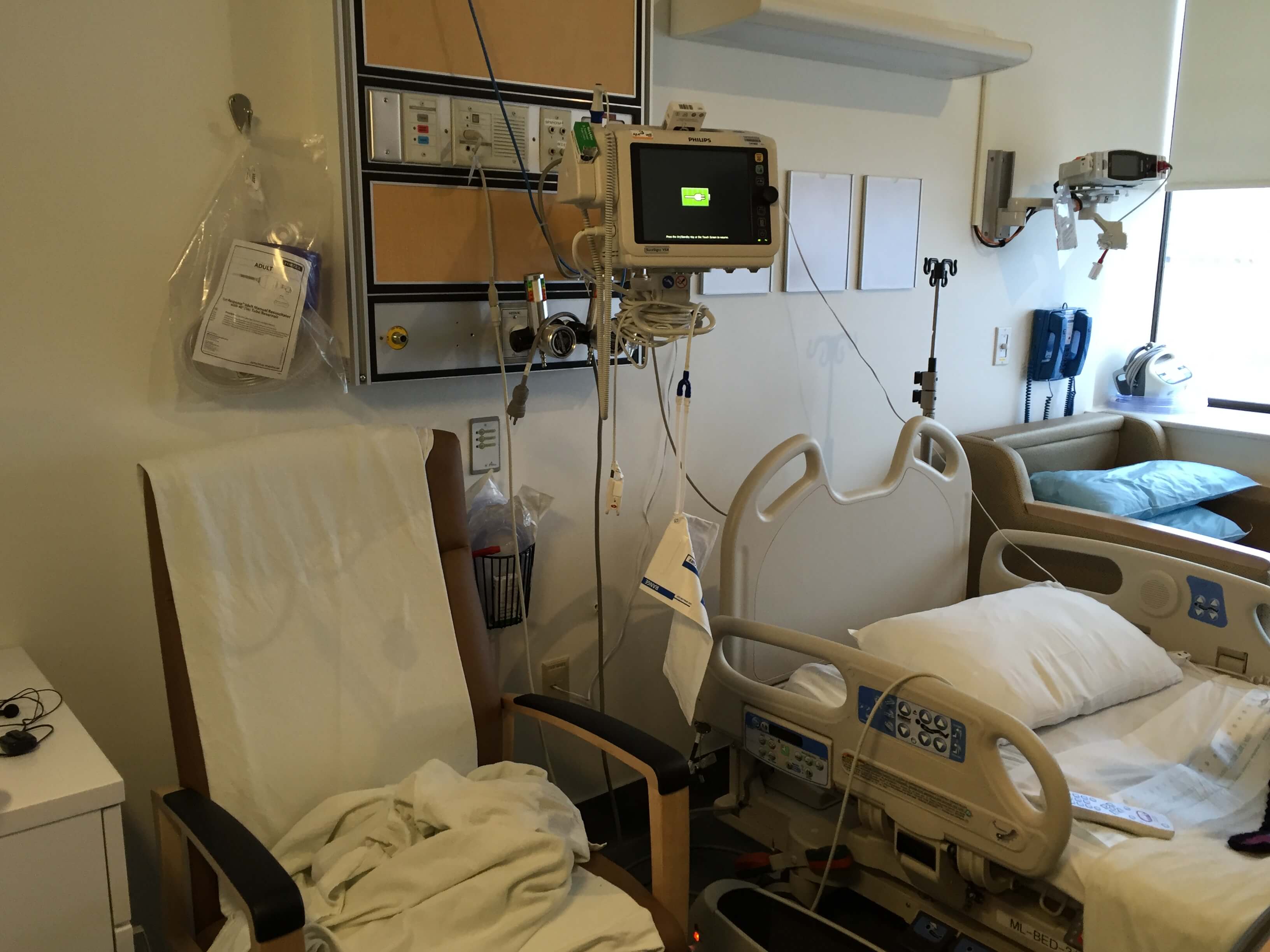
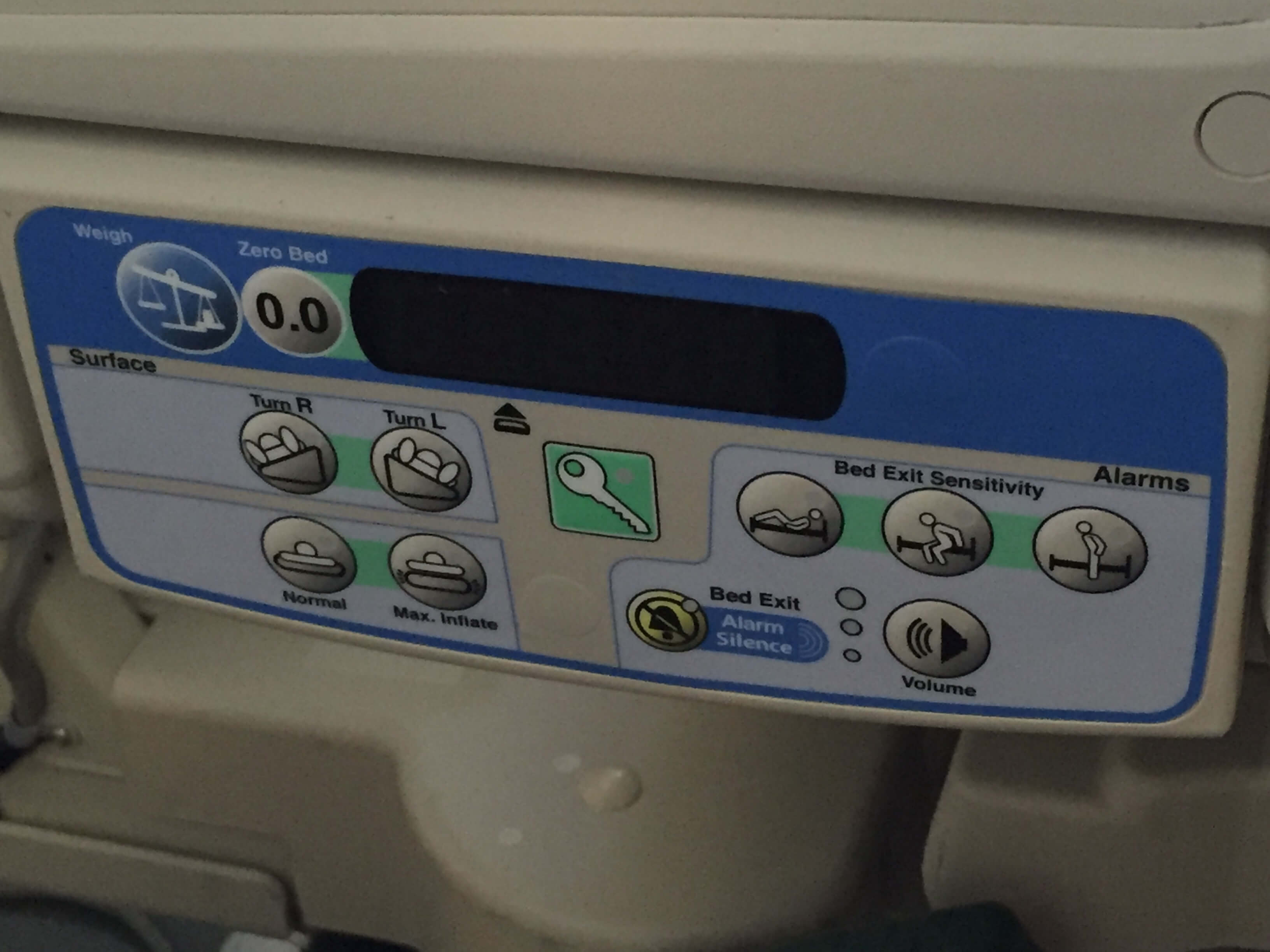
While mulling over the results of our research, we performed a competitive analysis of existing products in the space, identifying alternative hospital lighting solutions such as AcuityBrands' ComfortView MRI LED, HealWell, an ambient lighting experiment by Phillips, and smart bulbs such as Hue, Flux, and LIFX. We noted each product's target userbase, functionality, and usability.
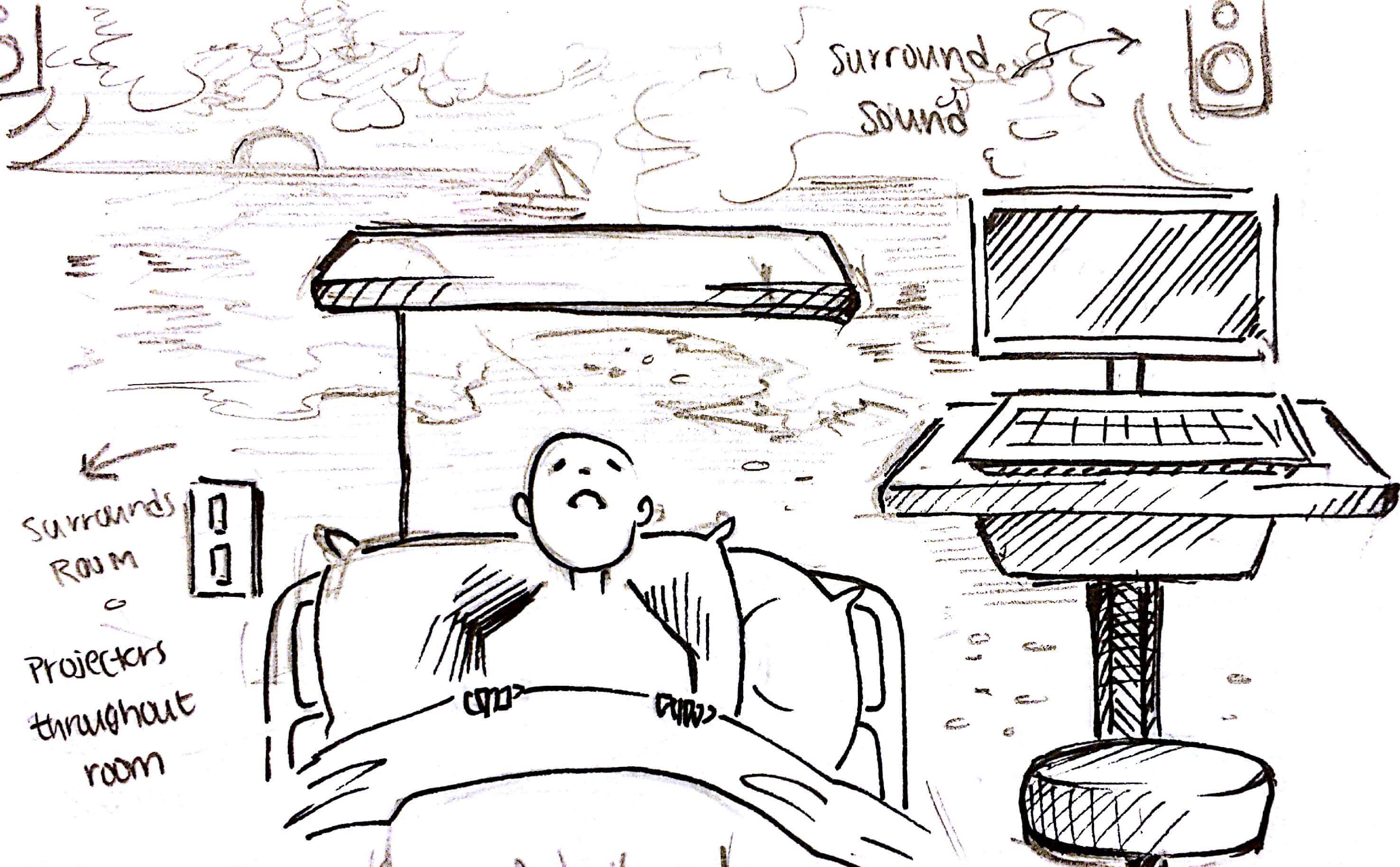
As we wrapped up our research, we reexamined the objective of our project and our solution, hammering out the specifics and dividing our proposal into several key features we would need to develop during the prototyping stage. We further created a storyboard to communicate a potential userflow.
The prototyping period was roughly a month where we researched different kinds of smart bulbs, created 3D models of our controller, learned to interface between the project, RaspberryPi, and RedBear Duo, figured out what hardware we did and did not need, and coded up the web interface of SendLove.
You can view a write up of our first prototype here. Lumos underwent roughly three interations before we were ready to bring it to UCSF for preliminary testing.
View a poster summarizing our project here.
At the end of the process, we were able to secure one last visit to UCSF to do some onsite testing and obtain feedback (reception was generally positive, especially towards the environment simulation) from the hospital staff.